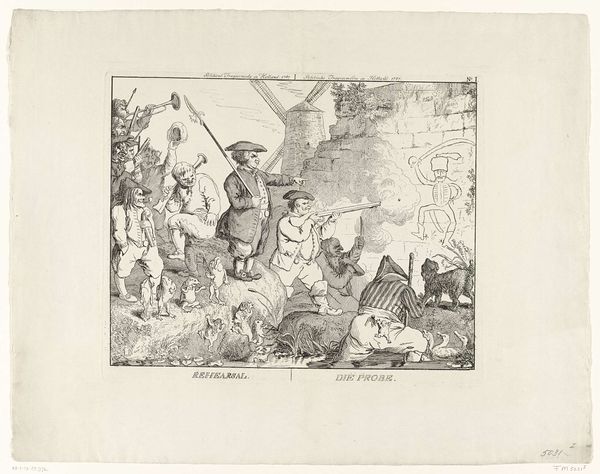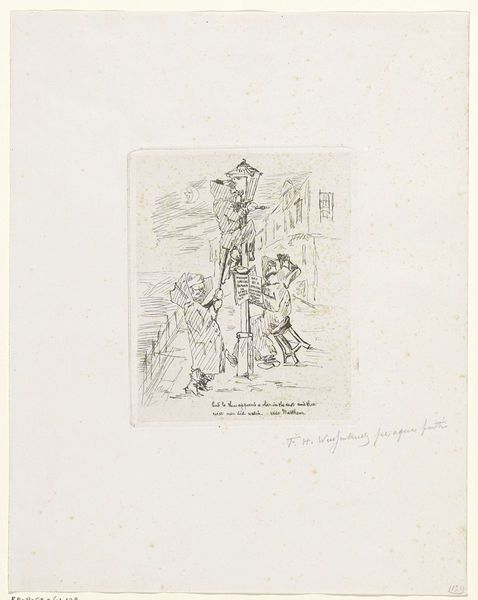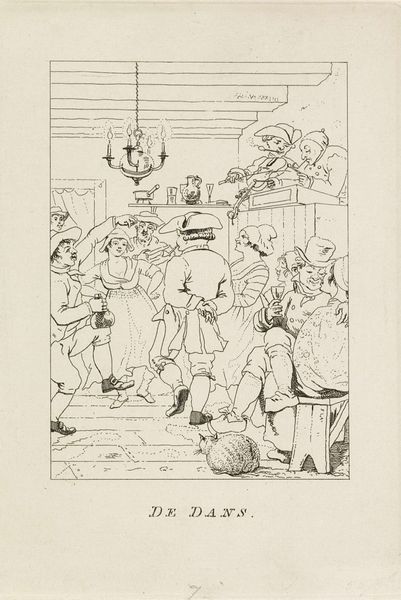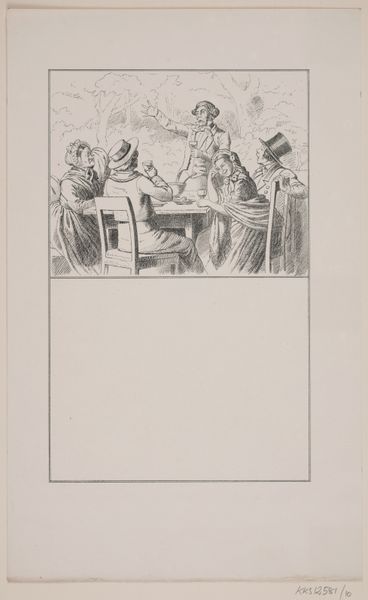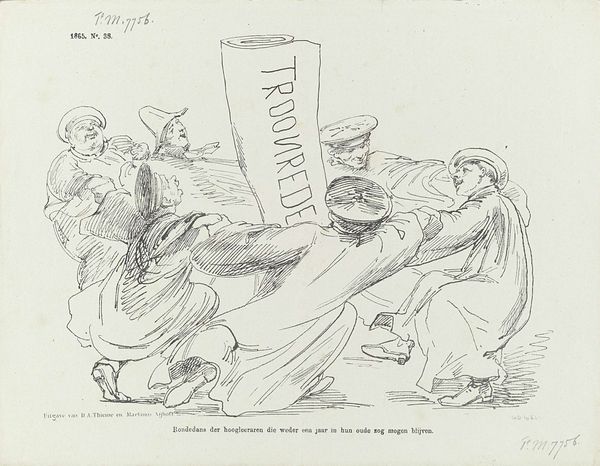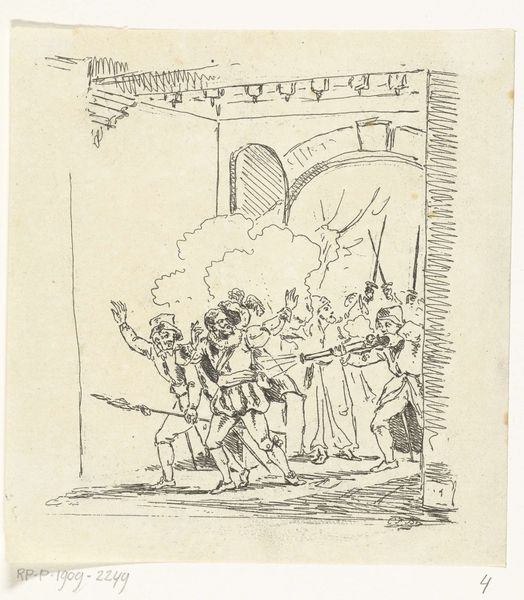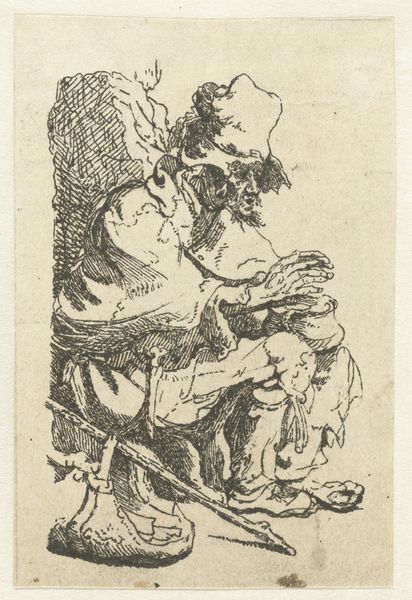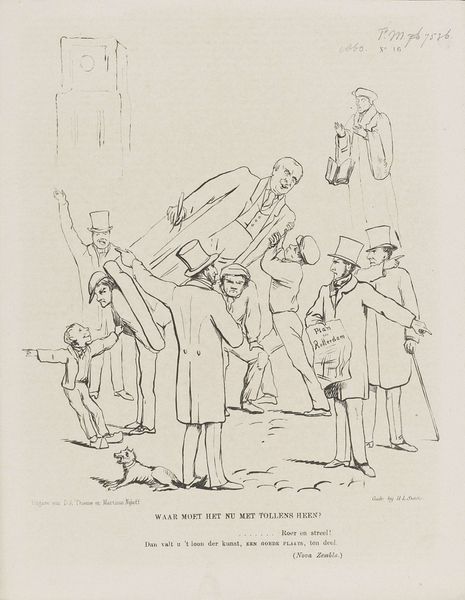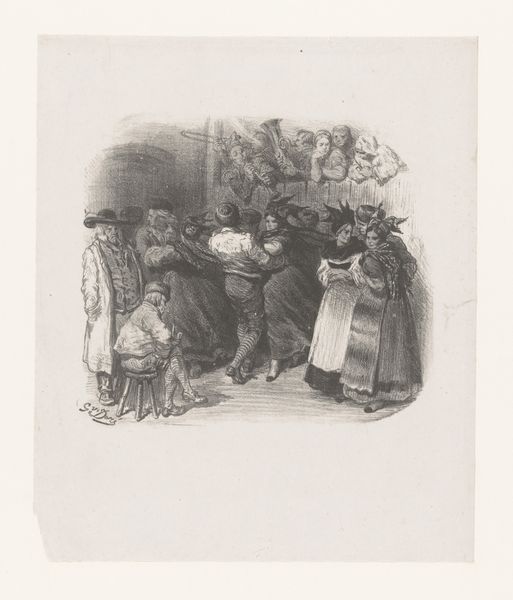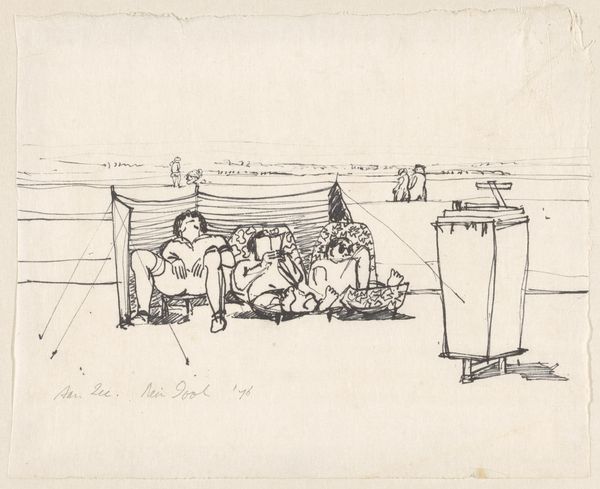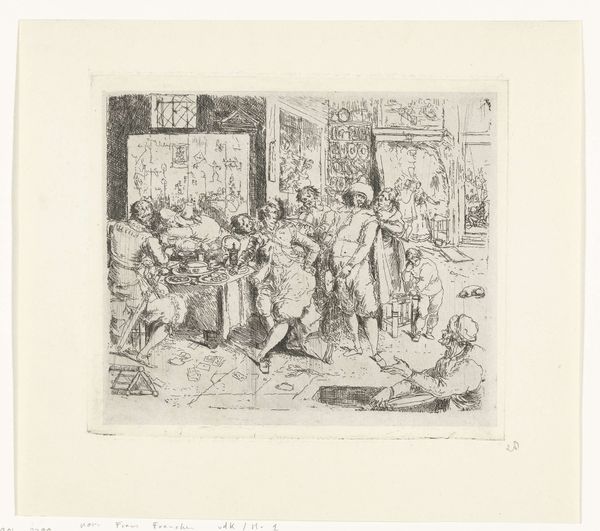
drawing, print, ink
#
drawing
#
comic strip sketch
#
quirky sketch
# print
#
caricature
#
personal sketchbook
#
ink
#
idea generation sketch
#
sketchwork
#
ink drawing experimentation
#
comic
#
sketchbook drawing
#
history-painting
#
storyboard and sketchbook work
#
sketchbook art
#
modernism
#
initial sketch
Dimensions: height 275 mm, width 215 mm
Copyright: Rijks Museum: Open Domain
Curator: This drawing by Johan Michaël Schmidt Crans is titled "Spotprent op de kerstboom voor de Tweede Kamer," or "Cartoon on the Christmas Tree for the Second Chamber," made in 1860 using ink and print. It appears to be a political caricature. Editor: It’s chaotic and busy! I’m immediately drawn to the swirling figures at the base. It gives me a feeling of tension, like things are slightly out of control. Curator: Indeed. The artist cleverly uses the Christmas tree motif to critique the Dutch Second Chamber, likely lampooning specific policies or political figures of that time. We see figures circling the base with names attached, suggesting representation of different political districts or factions perhaps? Editor: I notice various symbols hanging on the tree: a train, a courthouse, even what looks like a church. The 'gifts' are not comforting ones; they have a very direct, civic character. Could they signify the government's priorities, or maybe promises made and broken? Curator: Exactly! These ornaments, seemingly desirable things like transportation and justice, might represent issues debated within the Second Chamber. The "kanalization" banner at the top possibly signifies debates about infrastructure development, reflecting political concerns of the era. Editor: There's a satirical edge here; the idea of politicians dancing around a tree laden with what they supposedly offer the public… it's biting! What about the discarded items at the base on the left? Curator: Likely abandoned "algemeene beginselen" or “general principles” representing discarded platforms of these leaders in their relentless drive. These prints were often circulated to influence public discourse in very visual ways. It is the political issues of the day made readily accessible. Editor: I see, a clever way to package complex political ideas in a memorable visual. It seems the artist uses these loaded images on the tree, along with the names circling its base, to comment on political maneuvering. Curator: Precisely. The artwork serves as a time capsule, giving us insight into the political climate of 1860 Netherlands and how social commentary can be embedded in visual symbolism. Editor: It's a reminder that even festive imagery can be a canvas for political commentary. It enriches our understanding of art as cultural reflection.
Comments
No comments
Be the first to comment and join the conversation on the ultimate creative platform.


